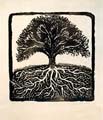|
|
|||||||||
|
TITLE: Using Artwork to Develop Personal Narratives |
|||||||||
|
ENGLISH: Composition GRADE LEVEL: Grades 9, 10 TEKS:
Chapter 110 The student will use a work or art as a springboard to a personal narrative or descriptive writing. The student will use the total writing process to produce a completed essay. The student will represent an idea in an artistic product which connects to composition. MATERIALS:
|
|||||||||
|
|||||||||
|
DISCUSSION:
VOCABULARY TERMS: symbol PROCEDURE:
EVALUATION: Rubric which addresses the areas of composition as well as neatness and detail in the drawing. RESOURCES: Robertson, Pauline Durrett and R. L. Robertson. "Mystery Woman of Old Tascosa: The Legend of French McCormick." Panhandle Pilgrimage. Amarillo, TX: Paramount Publishing, 1978. Born in 1852 in Louisiana, Frenchy followed her sense of adventure west until she arrived in Dodge City, Kansas, with its booming cattle center and exuberant cowboys who enjoyed dancing with this dance hall girl. From there she headed south to Texas, where she met Mickey McCormick in Mobeetie in 1880. Thus began a romance that legends are made of. Mickey, her Mack, called Frenchy his luck because when she was with him at the gambling tables, he won. Frenchy took off with Mickey when he returned to Tascosa, a lively West Texas community frequented by interesting characters of the Old West. Mickey and Frenchy, whose real name Elizabeth McGraw appeared on the marriage license, were married in 1881, by the local bartender and justice of the peace. They settled in Tascosa where Mickey built a two-room adobe house beside a twisted cottonwood tree along Atascosa Creek, just three blocks from Mickey's livery stable on Main Street. Their love and devotion became evident to the townspeople, who accepted the them as respected citizens even though the couple never formally socialized with the prominent families. During these years, Frenchy's whole life revolved around her Mack, her home, and the townspeople of her town. They set their past behind them and looked to the future together. Tascosa flourished until 1880, when barbed wire and the railroad influenced many residents to move on. Yet, Frenchy and Mickey remained, living comfortably off the land and some hunting and hauling. Their animals and close companionship made life enjoyable for them. When Mickey died in October of 1912, Frenchy buried him in the nearby cemetery; she could see his simple gravestone from her front yard. Frenchy lived alone in their simple house for twenty-seven years, surviving raging floods, the Dust Bowl, isolation, rattlesnakes, lack of any modern conveniences, and declining health. She was determined to stay at Mack's side. Finally, she agreed to move to town as long as her friends promised to see that she was returned to Mickey's side when she died. Her leaving Tascosa left the town a ghost town. She then lived in Channing until her death two years later. Shortly after Frenchy moved to town, the educational and nurturing community of Boys Ranch was started as the first few boys were involved in what has become a nationally-known program. Young boys ran, played, and worked on the land and in the trees that Frenchy and Mickey had known so well. French McCormick died peacefully in her sleep in 1941. Her body was laid to rest beside her beloved Mickey and a second simple gravestone graced the prairie. The bent tree, which stood beside the now-fallen house, remains as the tribute to their undying love, standing the test of time. (Summarized from Panhandle Pilgrimage) |
|||||||||

